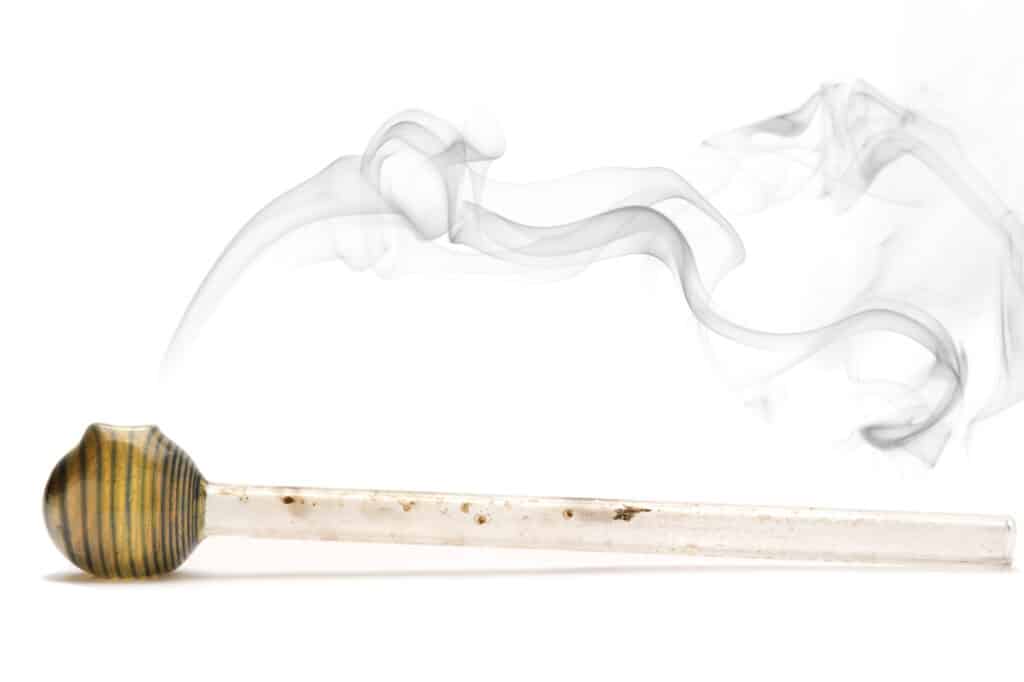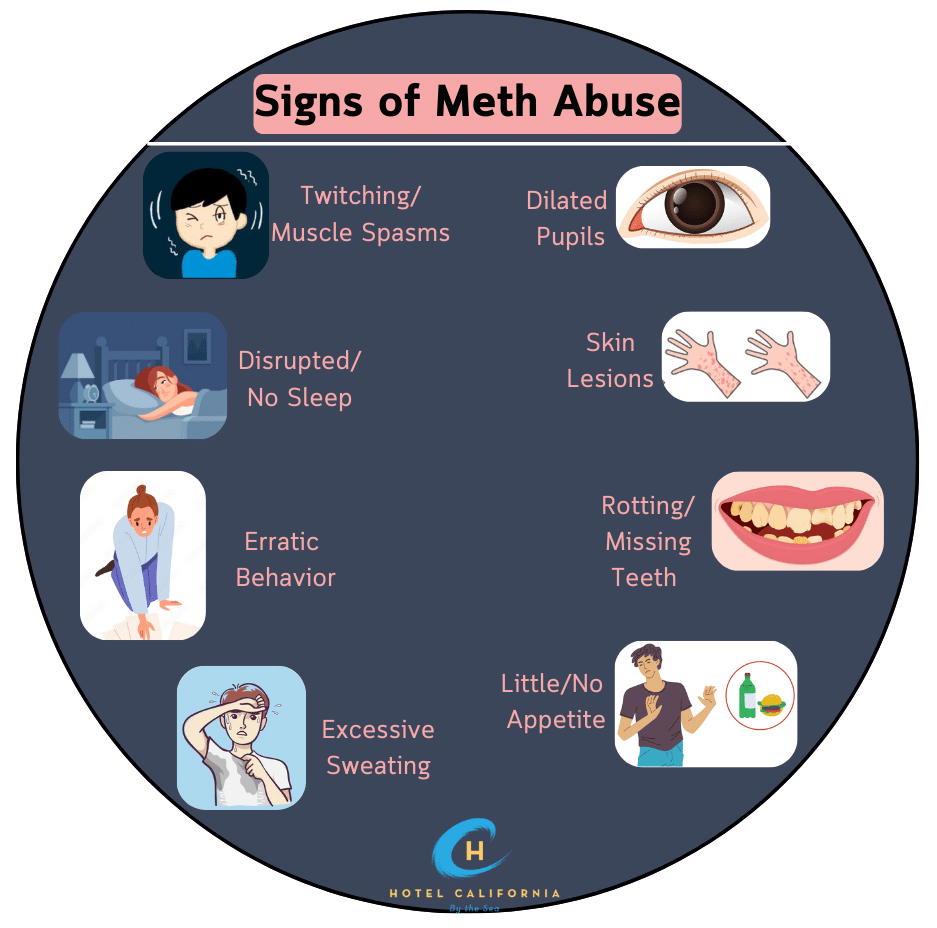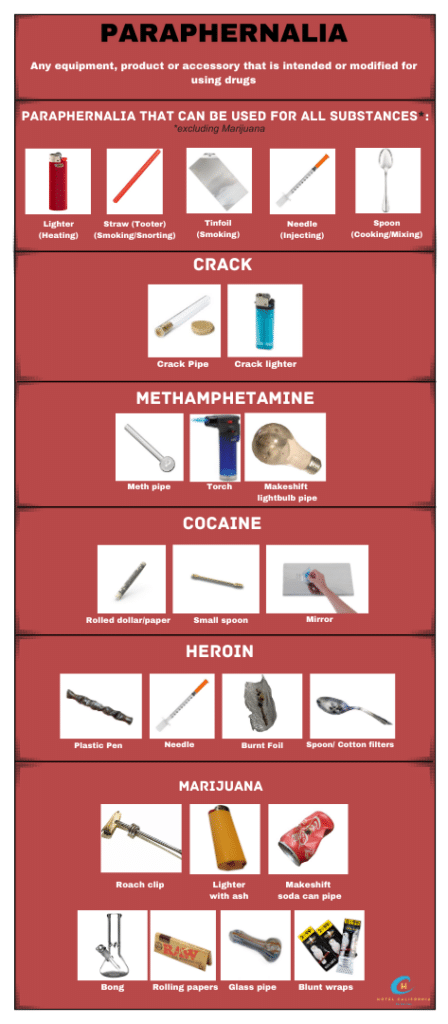What does a Meth Pipe look like?
With the growing popularity of using methamphetamines, so is the variety of ways in which the drug is ingested. One of the most common ways to ingest meth is through smoking or inhaling. Most users prefer this method because it produces very intense effects and does not leave noticeable injection marks. Meth pipes are often used to smoke the simulant substance. A meth pipe is a type of drug paraphernalia. Meth pipes are used because they are a fast and effective way to deliver the effects of the drug into the body to provide an intense and immediate “high” within seconds.

Meth comes in various forms. It can be a white or slightly blue powder that can be snorted or diluted in liquid and injected. Meth can also come in the form of crystal-like rocks. This is known as crystal meth. Crystal meth resembles glass shard-like structures. Crystal meth is the most common form of the drug that is used to smoke with meth pipes.
Street names and alternative slang terms for meth pipes include glass rose, bubbles, tweak pipe, crank pipe, love pipe, oil burner, and pocket rocket. The presence of meth pipes is a distinct sign of a crystal meth addiction. This type of drug paraphernalia comes in all different sizes, shapes and designs.
What does a Meth Pipe look like?
A meth pipe is often made from glass. It is a thin material that won’t burn easily. This is because meth can only be vaporized at very high temperatures, so it is necessary for the pipe to be able to withstand very high temperatures. It is often blue, green or clear in glass color.
Meth pipes look like a long narrow glass pipe with a round bowl at the end of the pipe. The round, cylindrical and bulbous shape of the bowl has a very small opening. The shape of the bowl at the end is designed to concentrate the smoke and vapors to be inhaled. It is usually only a few inches long. This allows it to be easily carried around and concealed. Pipes are used because it is fairly inexpensive, easy to use and easily hidden.

Are there different types of Meth Pipes?
Meth pipes can be glass pipes, plastic pipes, metal pipes or homemade pipes. Glass pipes are the most common. However, because they are a thinner material, they are easily prone to cracking or chipping. Plastic pipes are sometimes used to smoke meth. However, there are serious risks due to the plastic material being toxic when heated and inhaled. Plastic pipes can also be difficult to clean and sanitize.
Metal pipes can withstand much higher heating temperatures. But certain types of metals such as lead, and copper can have potential dangers on the respiratory system. Homemade pipes can be made from household materials such as aluminum cans or light bulbs. Drug users have also been known to use tinfoil, pens, and glass vials. When heated, these materials can release toxic fumes.
So how does a Meth Pipe work?
Small amounts of crystal meth are placed in the round bowl end of the pipe. It is heated underneath while the user inhales the vapors through the mouthpiece end of the tube. The high heat allows the meth to vaporize for the user to inhale the smoke, hold it in the lungs for a few seconds and then exhale. Smoking meth allows for the drug to absorb through the lungs, quickly reach the bloodstream and brain, and induce a high and intense relaxation. This euphoric sensation can also create symptoms of increased energy and alertness.

How to Recognize a Meth Pipe
- Check for scorch marks and melt marks around the bowl area of the pipe
- Check for any white, brown, yellowish or waxy residue
- The area where meth is burned at the bottom of the bowl will become black over time
- Look for burn marks on the face, lips and hands of a person
- Examine the room and surroundings for plastic baggies in which the meth was packaged
- Examine the room and environment for broken light bulbs or flattened soda cans, as they can be used as homemade meth pipes.
What are some of the dangers of a Meth Pipe?
- Burns. Meth pipes are usually made of thin material or thing glass. This increases the risk of getting burned while heating up the meth to a very high temperature. Burns around the mouth from touching superheated material to the face and burns on fingers are very common in meth pipe users.
- Cuts. Because meth pipes are made of thin glass, it can easily break leaving raw glass edges exposed. Users are prone to cuts on their hands and lips. Even the most experienced users can suffer from cuts and burns from a meth pipe.
- Lung damage. Smoking and inhaling meth and other substances expose lung tissue to harmful materials. Regular smoking can lead to a higher risk of pneumonia, pulmonary edema and other respiratory disorders.
- Toxic Byproducts. Smoking meth through a meth pipe exposes users to other toxic byproducts. Because meth pipe manufacturing is not regulated, it can be made of toxic materials or have coatings that are not safe when heated. By exposing these materials to heat, users ingest them through the vapors.
- Disease and transmission. Drug users often share meth pipes and other types of drug paraphernalia. This creates a greater risk of disease transmission.
- Overdose. Because drug vapors are difficult if not impossible to measure, there is no way of telling how much meth was ingested. Without knowing the amount of drugs taken, users are at higher risk for overdose.
Check Your Insurance Coverage for FREE
Find out if your insurance covers addiction treatment in minutes. We accept most insurance!
Other types of Drug Paraphernalia
Meth pipes fall under the category of drug paraphernalia. Drug paraphernalia is illegal under the U.S. Code Title 21 Section 863 which states it is unlawful for anyone to sell drug paraphernalia. Under federal law, drug paraphernalia is defined as “any equipment, produce or material of any kind which is primarily intended or designed for use in manufacturing, compounding, converting, concealing, producing, processing, preparing, injecting, ingesting, inhaling, or otherwise introducing into the human body a controlled substance.”
Though it is a federal law, being charged with possession of drug paraphernalia can vary from state to state. Recognizing what drug paraphernalia is can be tricky and could depend on many factors such as the description of the material or product, the instructions of the product and the type of business selling the material or product. Oftentimes, bongs and pipes are manufactured in colorful and trendy designs attempting to glamourize drug use. This makes it more attractive to teens and young adults.
Types of Drug Paraphernalia
- Meth – small glass pipes, tin foil, small mirrors, razor blades (for cutting drugs to snort), burnt spoons, lighters (to cook drugs) and small plastic bags.
- Marijuana – bong or makeshift bong, rolling papers, cigars (emptied and used to fill with marijuana to make blunt), roach clips
- Heroin – small spoon, syringes, plastic pen
- Cocaine – straw or tube, pipes, rolled up paper tubes, dollar bills
Reach out to Hotel California by the Sea
We specialize in treating addiction and other co-occurring disorders, such as PTSD. Our Admissions specialists are available to walk you through the best options for treating your addiction.
Treatment of Meth Use Disorder
Meth is a highly addictive substance that can be very difficult to overcome. Meth users who use various drug paraphernalia to further their addiction can develop serious physical and psychological side effects from the drug. They can cause long-lasting damage. Hotel California by the Sea is a premier substance use addiction recovery program designed to help clients in every aspect of their addiction and recovery. Whether you need intense treatment or less intense regular maintenance, our treatment programs span all levels of care.
We provide drug detox, residential inpatient treatment, PHP and IOP outpatient programs. Our program also offers specialized evidence-based treatments such as CBT, EMDR therapy and family therapy. Through a combination of medication-assisted treatments and cognitive therapy treatments, clients will be able to better understand the depths of their addiction. A better understanding allows for a pathway of healing, sobriety and recovery.
References
https://recovered.org/stimulants/meth-methamphetamine/how-to-spot-meth-abuse
https://livefreerecoverynh.com/meth-pipe/
https://www.illinoisrecoverycenter.com/meth-pipes/
https://zinniahealth.com/substance-use/methamphetamine/pipes
https://carolinacenterforrecovery.com/addiction-blog/what-do-meth-pipes-look-like/
https://www.guardianrecovery.com/addiction-101/what-is-a-meth-pipe/
https://www.justice.gov/archive/ndic/pubs6/6445/6445p.pdf
https://www.getsmartaboutdrugs.gov/content/how-identify-drug-paraphernalia
